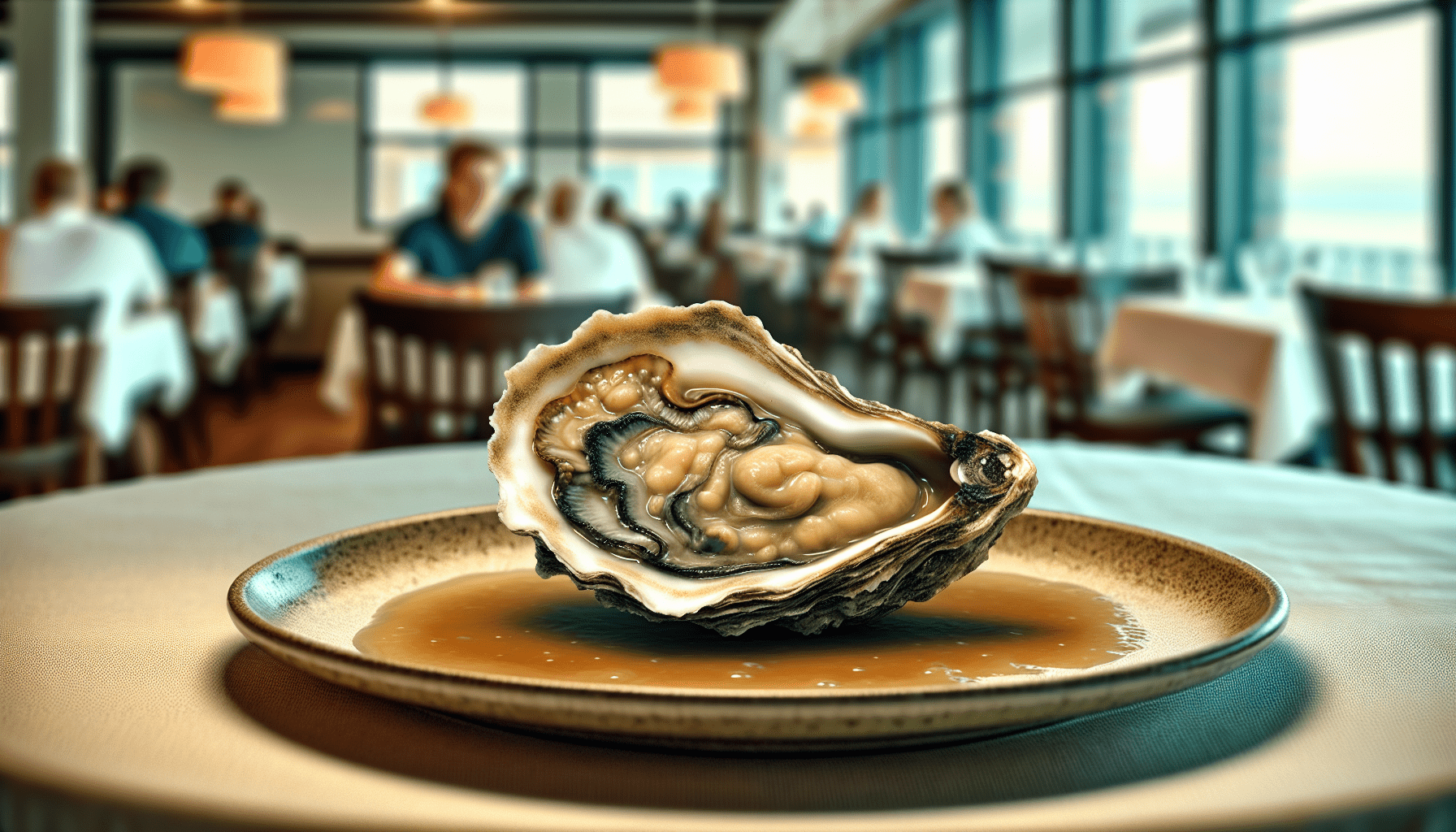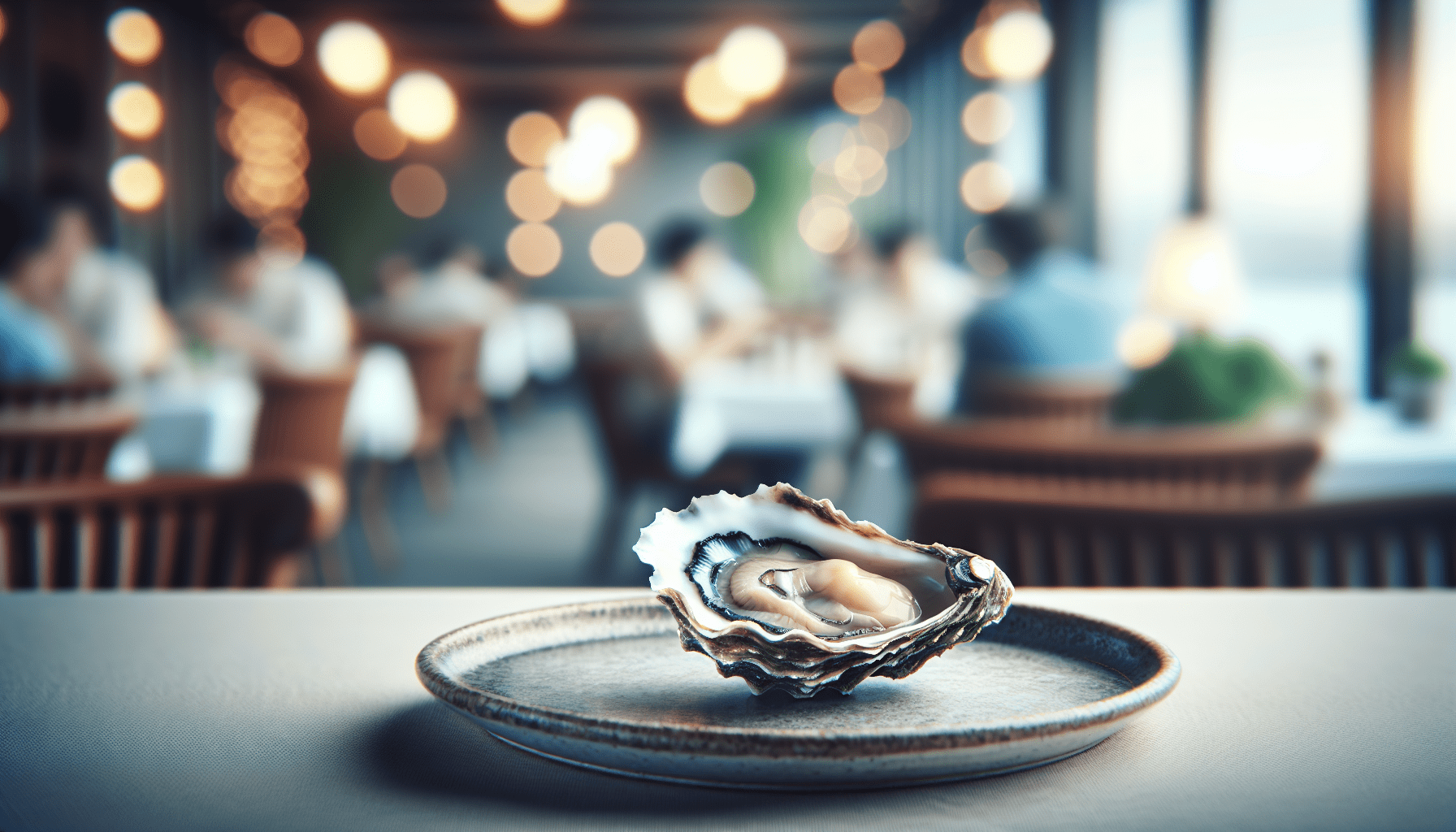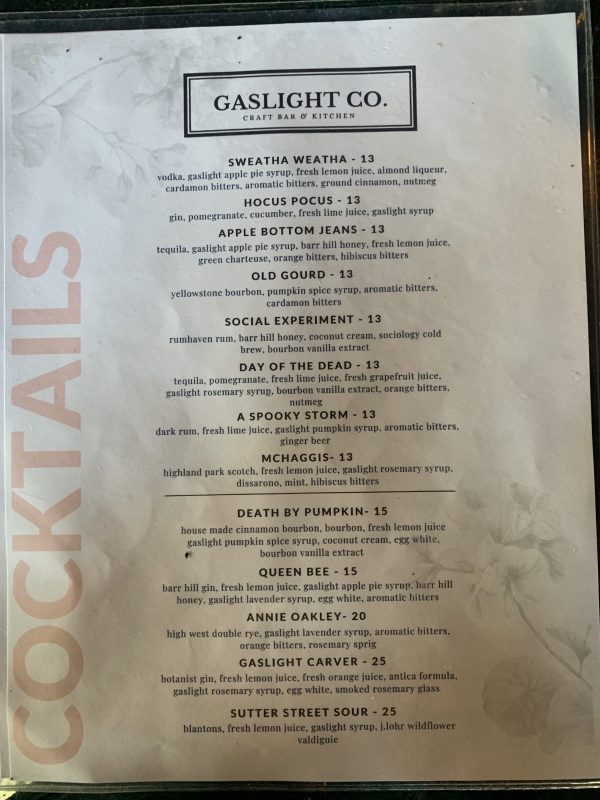Amazon Basics Medium Packing Cubes for Travel, Packing Organizers, 4-Piece-Set With Double Zipper Pulls and Mesh Top Panel, 100% Durable Polyester, Gray, 13.8"L x 9.8"W x 3"H
$17.91 (as of April 7, 2025 11:41 GMT +00:00 - More info)Have you ever wondered about the quality of oysters you order at a restaurant? This seemingly simple decision can influence your dining experience and even your health. Oysters, those briny delights from the sea, are best enjoyed fresh and full of flavor. However, understanding when to skip them can save you from a less-than-pleasant experience. Let’s explore the crucial sign you should look out for when deciding whether to order oysters at a restaurant.

Get an Official Zagat Restaurant Guide
The Journey of Oysters: From Sea to Plate
Seafood’s journey from ocean to table is a fascinating one. Freshness is key when it comes to seafood, and oysters are no exception. The fresher the oyster, the better the taste and safety. But what does this journey entail, and why does it matter so much?
Living Delicacies
Oysters are best kept alive until they’re ready to be shucked and served. This means that they need to stay alive from their harvest until they reach your plate, maintaining their inherent quality and taste.
| Freshness Indicator | Description |
|---|---|
| Appearance | Glossy, fat, full, light tan hue |
| Smell | Customary salty aroma, not overly fishy |
| Texture | Soaking in its own juices (oyster liquor) |
| Shell | Bright, glossy shells with grey and pinkish streaks |
Non-Coastal Dining: A Red Flag
One major sign that you should skip ordering oysters is the location of the restaurant. Dining far from the coast? It might be best to avoid raw seafood. If your oysters had to travel more than 100 miles to get to your restaurant table, their freshness might be compromised, increasing the risk of foodborne illnesses.
Inland Eateries
Those dining options far from the sea often face challenges in maintaining the pristine condition of fresh seafood. By the time the oysters reach these inland eateries, they might not be as fresh as you would like them to be.
Recognizing Bad Oysters: The Warning Signs
Knowing the signs of bad oysters can protect you from a potential health hazard. A bad oyster can lead to food poisoning, which is an unpleasant experience to say the least.
The Look
Oysters should have healthy meat that looks glossy, fat, and full with a light tan hue. Spoiled oysters, on the other hand, may appear brownish, grey, black, or even pink. They might look cloudy or withered and dry, which are telltale signs you should steer clear of.
The Smell
Fresh oysters should have a customary salty aroma, resembling the sea. Smell can be tricky, though, as bad oysters don’t always have a significantly different scent. Always trust your senses. If the aroma doesn’t resemble the sea or is overly fishy, it’s best to avoid eating them.

Get an Official Zagat Restaurant Guide
Checking Oyster Quality at Home
If you prefer to skip the risks of ordering oysters at a restaurant and prepare them yourself at home, there are certain tips to ensure you select the best.
Shell Health
Healthy oyster shells should be bright, glossy with grey and pinkish streaks. Discard any shells that are green or overly browned. The integrity of the shell is crucial for keeping the oyster alive.
Tap Test
Closed oysters should pass the tap test. Tap them against each other or with a shucking knife. Healthy oysters will sound solid, like rocks. Hollow-sounding oysters have likely gone bad and are unsafe to consume.
Proper Storage
If you’re not cooking your oysters immediately, store them correctly to preserve their quality. Wrap them in a damp cloth and keep them in the refrigerator with the rounded shell down, allowing them to stay in their liquor. Do not store them in an airtight container as they can suffocate.
| Storage Tips | Description |
|---|---|
| Environment | Cool, moist |
| Wrapping | Damp cloth |
| Position | Rounded shell down |
| Container | Not airtight |
Cooking Techniques
Whether you’re cooking them or consuming them raw, oysters should be fresh. Each cooking technique has its own best practices, but freshness and proper handling remain priorities.
Safe Shellfish: When Cooked and Closed
The safety concerns surrounding shellfish like oysters extend to other varieties such as clams and mussels. It’s crucial to recognize the signs of freshness and to discard any shellfish that don’t meet these standards.
Shellfish Safety
Fresh shellfish should have their shells clamped shut. When cooked, these shells naturally open up, exposing the meat. Any shellfish that doesn’t open after cooking is unsafe to eat and should be discarded.
Asking the Right Questions at Restaurants
Don’t hesitate to ask your server about the source and freshness of the oysters. A reputable establishment will be transparent about the origins of their seafood. It’s perfectly acceptable to inquire about where and when the oysters were sourced.
| Question to Ask | What to Expect |
|---|---|
| Source of oysters | Location of harvest |
| Timing of catch | Recent catch, ideally same-day or up to 10 days if stored properly |
The Oyster Experience: Enjoying Freshness
Despite the potential risks, oysters are a delightful treat when fresh and properly handled. Whether you enjoy them raw, baked, boiled, or steamed, the freshness and handling of the oysters make all the difference in your culinary experience.
Oysters in the Kitchen
Experimenting with various oyster recipes can be a fun and rewarding culinary adventure. Remember to prioritize fresh, healthy shellfish to avoid the pitfalls of foodborne illnesses.
| Popular Oyster Preparations | Description |
|---|---|
| Raw | Freshly shucked with lemon and mignonette |
| Baked | Topped with breadcrumbs, butter, and herbs |
| Grilled | Grilled until the shells open |
| Oyster Shooter | A shot of oyster with cocktail sauce |
Conclusion
Oysters are best enjoyed fresh and should be evaluated carefully whether you’re ordering them in a restaurant or preparing them at home. The key takeaway is to be mindful of the quality and source of your oysters. Look out for signs of freshness, trust your senses, and don’t hesitate to ask questions to ensure a safe and delightful oyster experience. Your health and palate will thank you.
Remember, the journey from sea to plate is crucial, and with the right knowledge, you can ensure every oyster you eat is a culinary delight. Enjoy your seafood responsibly and relish the flavors of fresh, well-handled oysters.
Get an Official Zagat Restaurant Guide






